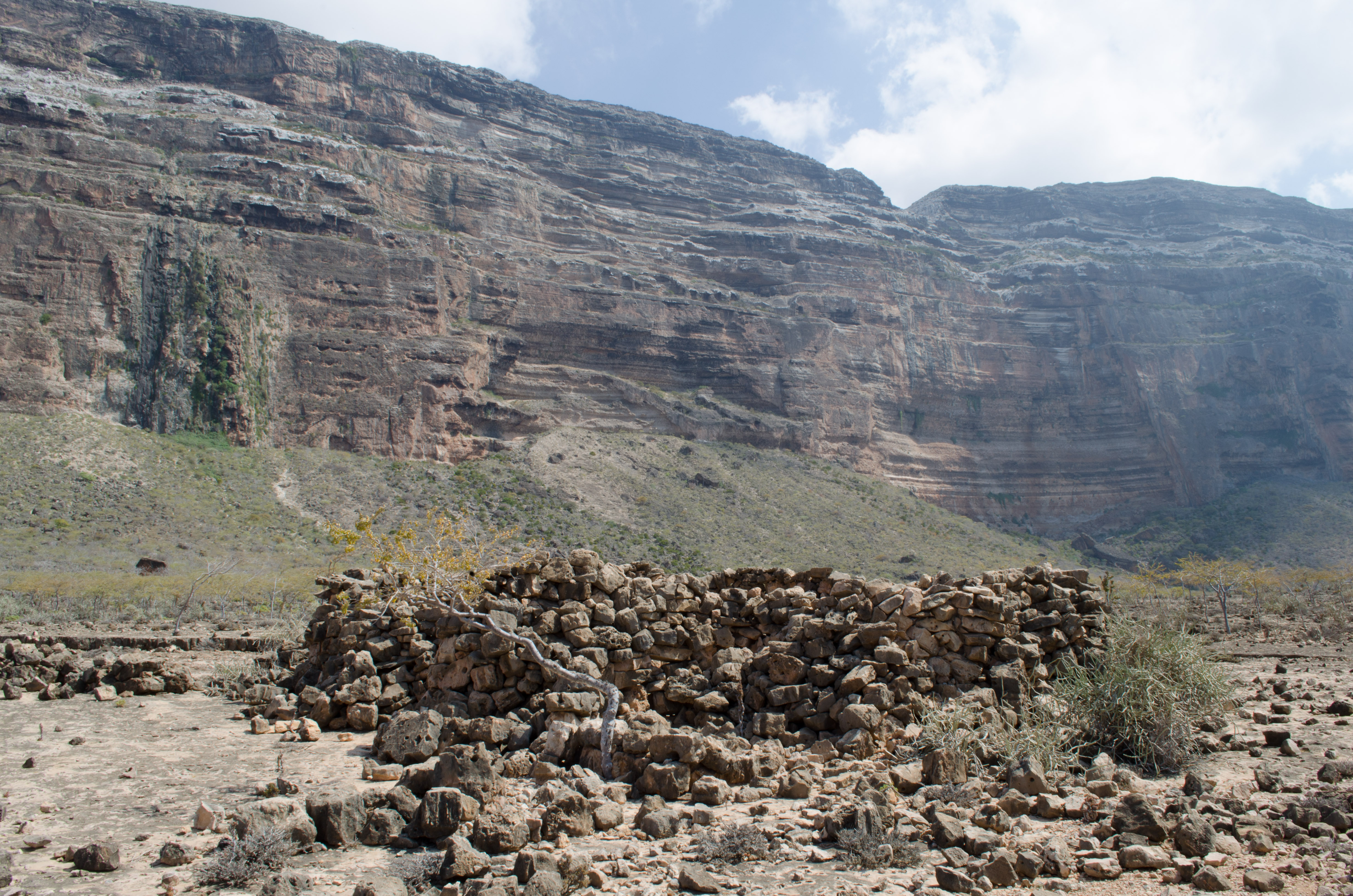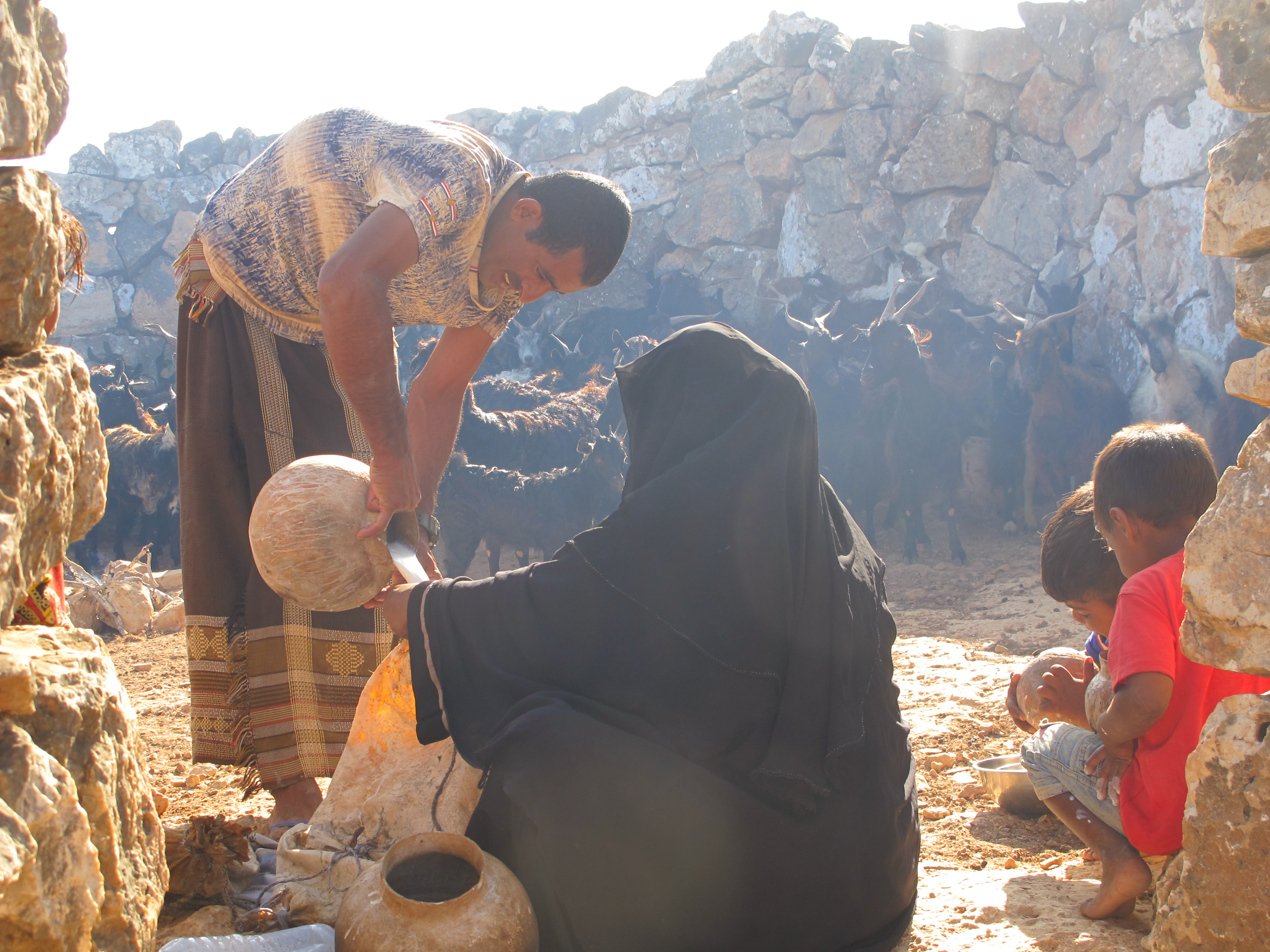


Durante muchos años, los proyectos de conservación de la isla se han centrado exclusivamente en la naturaleza y la biodiversidad. El Proyecto del Patrimonio de Soqotra pretende abordar tanto el patrimonio natural como el cultural como un elemento interrelacionado que está ampliamente interconectado dentro de la vida y la cultura de los pueblos autóctonos de la isla y que son un componente clave del paisaje biocultural del archipiélago de Soqotra.
Este acto de reconexión se establece en primer lugar mediante la identificación y documentación de manifestaciones y expresiones del patrimonio material e inmaterial, así como el establecimiento de actividades de sensibilización. El equipo del proyecto cooperó con un grupo de personas locales interesadas en la documentación de más de 400 bienes del patrimonio cultural material (edificios, monumentos, lugares históricos, así como artefactos y objetos) y de las tradiciones orales e inmateriales -en particular la lengua indígena local y la historia oral- de las comunidades de Soqotri mediante informes, fotografías y películas. Este proceso incluía la consideración de la integración del patrimonio cultural en los sistemas de áreas protegidas diseñados para la conservación de la biodiversidad, y la sensibilización de las comunidades locales sobre la importancia de conservar el patrimonio en su forma más amplia.
La asociación interdisciplinar que respalda el proyecto es la espina dorsal de la aplicación de un enfoque más global del patrimonio.
Además, el hecho de que el miembro del personal local del ARC-WH y el equipo del proyecto estén bien conectados con las principales partes interesadas locales, como los representantes de la Gobernación, el GOAM y la EPA, facilitó la comunicación y difusión de información clave que motivará una ampliación del enfoque puramente de biodiversidad a un enfoque de conservación más centrado en la naturaleza y la cultura.
El proyecto se centró en cuestionar la separación existente entre naturaleza y cultura, que sigue estando ampliamente integrada en el pensamiento conservacionista. Esta división también puede encontrarse en las diferencias entre la comprensión y el pensamiento de las comunidades locales y la influencia profesional externa. Un elemento clave para superar estas divisiones ha sido la participación de las comunidades locales de Soqotri en la puesta en marcha, planificación y ejecución del proyecto, incluyendo debates con profesionales locales y miembros de la comunidad que representan los intereses de las comunidades de Soqotri.
El proyecto ha permitido reconocer y explorar las diferencias existentes entre la teoría y la práctica de la conservación de la biodiversidad y el patrimonio, así como la necesidad de considerar enfoques novedosos por parte de todos los participantes para adaptarse a un sistema local, especialmente cuando este sistema es un archipiélago relativamente aislado y en el que la gobernanza o las infraestructuras para la conservación y gestión del patrimonio son escasas o inexistentes.